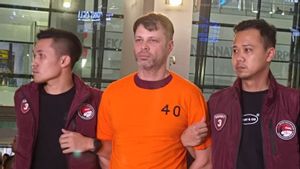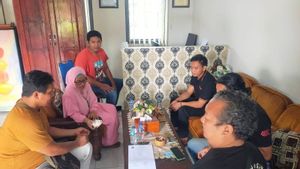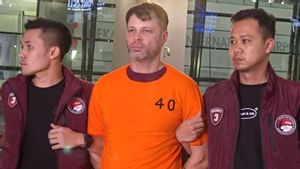JAKARTA - The Ministry of National Development Planning/Bappenas stated that there is a correlation between ownership of a Population Identification Number (NIK) and poverty.
"The highest poverty is in eastern Indonesia, especially Papua, and it turns out that the majority of poor people who do not have a NIK are in Papua around 50.78 percent," said the Young Planner of the Ministry of National Development Planning/Bappenas Fisca Miswara Aulia as reported by ANTARA, Wednesday, July 13.
Fisca said, the findings indicate that it is very likely that the poor are not registered in the database, so many have not received the assistance they should have received.
"NIK is very important because to be able to receive social assistance programs, they must be registered in the integrated social welfare system, and one of the main prerequisites is to have an NIK," he said.
The Ministry of National Development Planning noted that 22.72 percent of the poor aged 0-17 years or 2.4 million people do not have a birth certificate.
Meanwhile, 1.5 million people or 14.29 percent were unable to show a birth certificate even though they claimed to have one.
Meanwhile, 7.54 percent of the poor do not yet have a NIK which can be used as a proxy for ownership of an ID card and other legal population documents, such as a Family Card (KK).
"The crucial thing to be registered in the social assistance recipient is the ownership of population documents such as birth certificates for children and also ID cards, especially for the poor and vulnerable," he explained.
As for the percentage, the highest poor are in the eastern and central regions. In the first place is Papua, then West Papua, and East Nusa Tenggara.
Meanwhile, in absolute terms, the 5 provinces with the highest number of poor people are East Java (4.4 million), Central Java (3.9 million), and West Java (3.9 million).
Furthermore, Fisca conveyed, the problem of data on poor/vulnerable people in villages/kelurahan is based on several factors, namely population data collection, data interconnection, funding, then information systems, availability of human resources, and institutions.
"The challenge in distributing aid is that not all of them have the privilege to choose a bank and access points. As in Papua, where geographical conditions are difficult, so the cost to get there is greater than the assistance they get," he explained.
In addition, there are challenges to inadequate distribution of access points and user experience issues related to authentication barriers, unfriendly digital technology and obstacles to the checking process and data clarity.
The English, Chinese, Japanese, Arabic, and French versions are automatically generated by the AI. So there may still be inaccuracies in translating, please always see Indonesian as our main language. (system supported by DigitalSiber.id)









